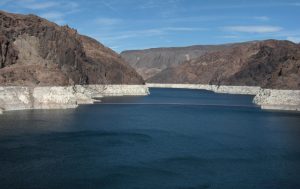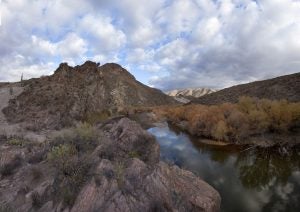Drought is the new normal in Arizona and the Colorado River Basin. The Colorado River is over-allocated, and potential reductions in Arizona water deliveries have become more and more likely.
Just last summer, we watched Lake Mead drop to one of its lowest levels ever. And even with a wet winter this year, Lake Mead’s elevation remains low. The river that provides 40 percent of Arizona’s water supplies needs our help.
A new deal
This summer, several parties came together to sign a “system conservation” agreement to address the situation. The State of Arizona, City of Phoenix, U.S. Bureau of Reclamation, and the Walton Family Foundation agreed to compensate the Gila River Indian Community to leave 40,000 acre feet of its 2017 Colorado River water entitlement in Lake Mead.
This is about 1.3 billion gallons of water, which is roughly the amount needed to serve 100,000 people in a year. The conserved water is designated as “system water” to help keep Lake Mead from falling below 1,075 feet – the elevation at which a federal shortage declaration is triggered and water delivery reductions are mandated (as stated in the proposed Lower Basin Drought Contingency Plan between Arizona, California, Nevada and the U.S. Bureau of Reclamation).











 Last week, Arizona Governor Doug Ducey illustrated strong and consistent leadership in addressing Arizona’s pressing water supply needs with two significant announcements.
Last week, Arizona Governor Doug Ducey illustrated strong and consistent leadership in addressing Arizona’s pressing water supply needs with two significant announcements.